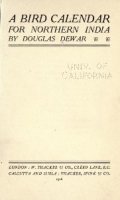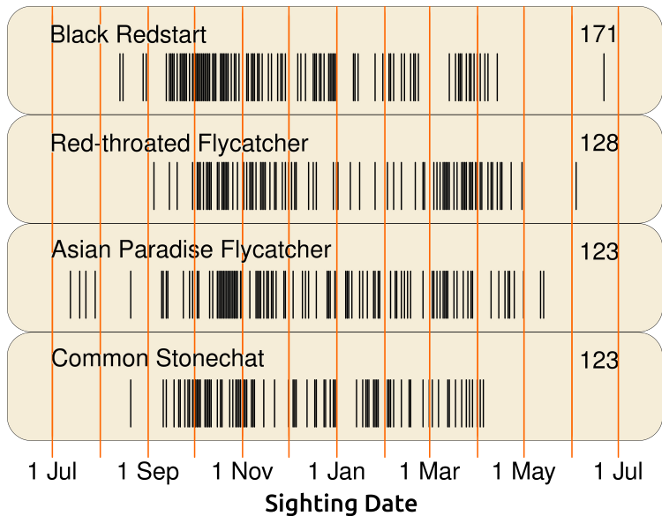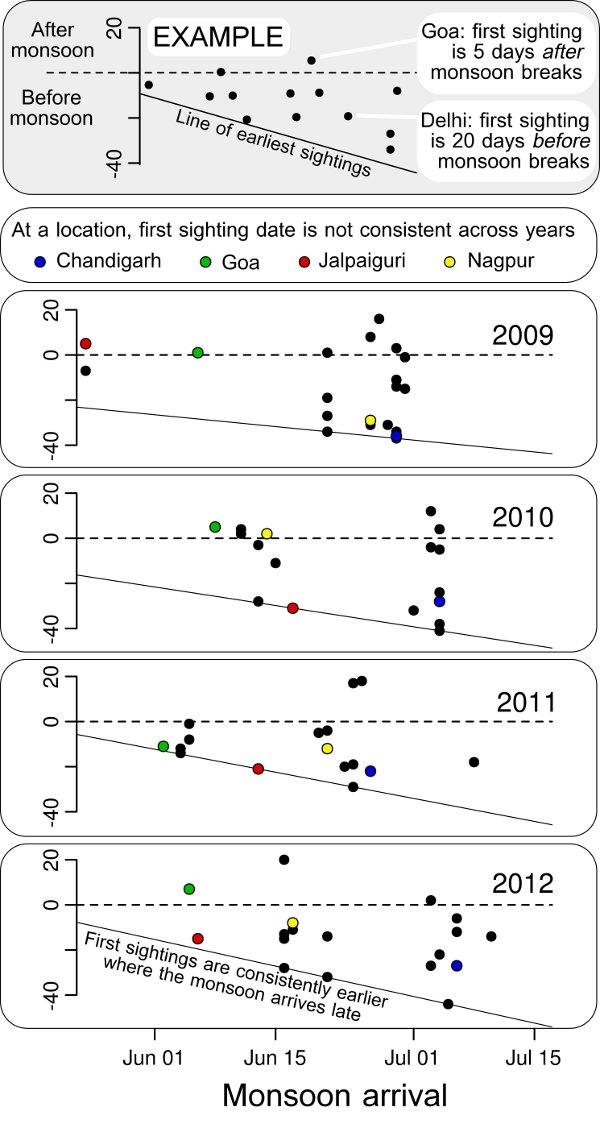By Devinder Singh Dhadwal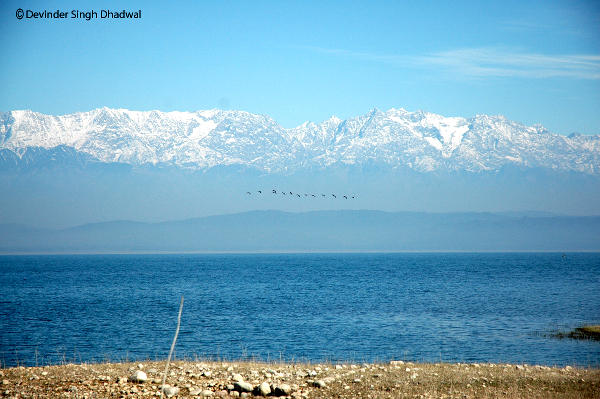
Situated about 250 km from Shimla and 190 km from Chandigarh and nestled in the picturesque Kangra Valley of Himachal Pradesh, Pong is one of the largest manmade wetlands of northern India. This huge wetland came into existence in 1974 after the construction of Pong Dam across the River Beas. Fed by waters from the Dhauladhar mountain range, the reservoir – also known as Maharana Pratap Sagar – forms a lake that is 42 km long and 19 km wide. It has a catchment area of 12,500 sq km that extends over the districts of Kangra, Mandi and Kullu. The area of the waterbody varies seasonally – ranging from about 125 sq km in summer to around 220 sq km in the monsoons.
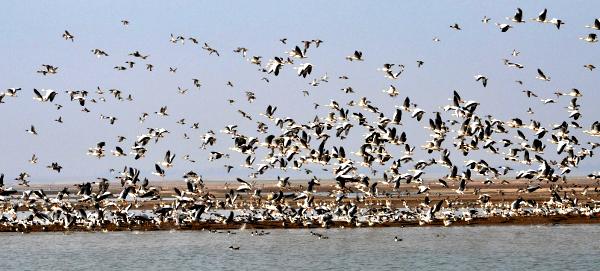 Pong has a variety of habitats in its fold – ranging from deep waters to marshlands. This, together with its geographic location in the foot of the Himalayas, makes Pong a very important wintering ground for migratory birds – including some rare species – from Central and Northern Asia. This wetland is the first major stopover reserve for birds migrating from the trans-Himalayan zone during winters when the wetlands in the Europe and North and Central Asia become frozen. Flocks of waterfowl that breed in the northern areas arrive during winter (October–March) to Pong to winter to more congenial climatic conditions.
Pong has a variety of habitats in its fold – ranging from deep waters to marshlands. This, together with its geographic location in the foot of the Himalayas, makes Pong a very important wintering ground for migratory birds – including some rare species – from Central and Northern Asia. This wetland is the first major stopover reserve for birds migrating from the trans-Himalayan zone during winters when the wetlands in the Europe and North and Central Asia become frozen. Flocks of waterfowl that breed in the northern areas arrive during winter (October–March) to Pong to winter to more congenial climatic conditions.
Till date more than 400 species of birds have been recorded from Pong. The latest addition to the list (418th) is also one of the rarest birds to be seen in the Indian Subcontinent: On 29th January 2013, a pair of Whooper Swans was sighted and photographed. It may be noted that the last 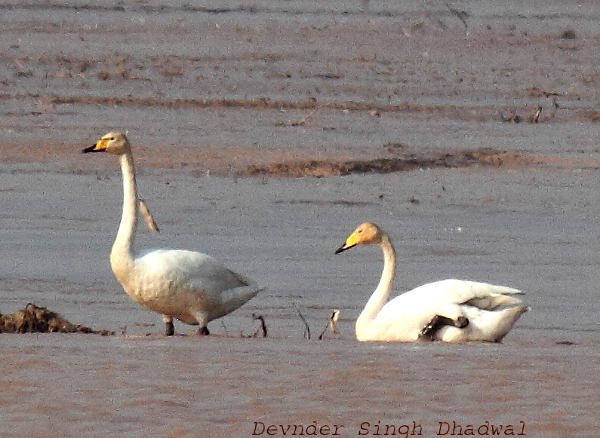 record of this elusive swan from India was way back in 1900 by E H Aitken (on Beas River) and Gen Osborne (at Talwara). Whooper Swan, the national bird of Finland (also featured on the Finnish 1-Euro coin), is a rare migrant to India from Central Asia and Europe. Like Sarus Cranes, the Whooper Swans are known to pair for life and are one of the heaviest flying birds with an average body weight ranging from 8.2 to 11.4 kg. The news of the Whooper Swan, drew tremendous interest from ornithologists all across the country. Another interesting bird that was recently sighted at Pong was the Ruddy-breasted Crake in the periphery of the Pong Dam wetland for the first time.
record of this elusive swan from India was way back in 1900 by E H Aitken (on Beas River) and Gen Osborne (at Talwara). Whooper Swan, the national bird of Finland (also featured on the Finnish 1-Euro coin), is a rare migrant to India from Central Asia and Europe. Like Sarus Cranes, the Whooper Swans are known to pair for life and are one of the heaviest flying birds with an average body weight ranging from 8.2 to 11.4 kg. The news of the Whooper Swan, drew tremendous interest from ornithologists all across the country. Another interesting bird that was recently sighted at Pong was the Ruddy-breasted Crake in the periphery of the Pong Dam wetland for the first time.
Pong also has the distinction of being the first Ramsar site of Himachal. It is, without doubt, one of the most critical sites for bird migration in India. An estimated 1.50 lakh migratory birds visit Pong to roost and feed every winter! The scale can be judged by a recent survey wherein huge numbers of species such as the Bar-Headed Goose (34,000), Northern Pintail (21,000), Common Pochard (12,000), Tufted Pochard (8,000), and Common Teal (6,800) were observed.
 MigrantWatcher Devinder Singh Dhadwal is an Assistant Conservator of Forests with the Himachal Pradesh Forest Department. He is a passionate ornithologist who has been working on conservation efforts in Pong for more than 10 years in his capacity of Wildlife Warden. Also a keen photographer, DS Dhadwal has authored a book titled Wild Wings: Pong and its Birds.
MigrantWatcher Devinder Singh Dhadwal is an Assistant Conservator of Forests with the Himachal Pradesh Forest Department. He is a passionate ornithologist who has been working on conservation efforts in Pong for more than 10 years in his capacity of Wildlife Warden. Also a keen photographer, DS Dhadwal has authored a book titled Wild Wings: Pong and its Birds.
For more details on Pong please write to DS Dhadwal at dd123.singh[at]gmail[dot]com
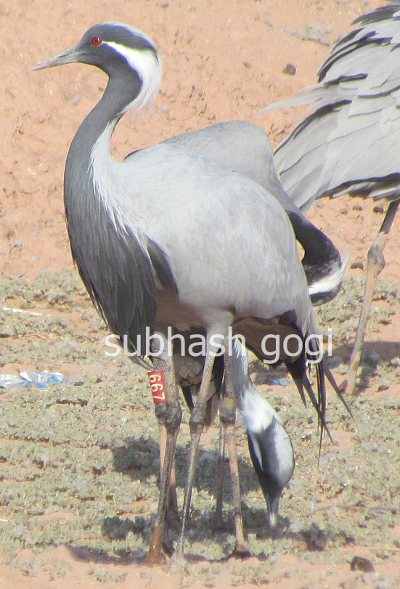 MigrantWatcher Subhash Gogi spotted and photographed a ringed Demoiselle Crane at Khichan village, Jodhpur district, Rajasthan on the afternoon of 6th March 2014. The ring on the bird was red-coloured and bore the number 667.
MigrantWatcher Subhash Gogi spotted and photographed a ringed Demoiselle Crane at Khichan village, Jodhpur district, Rajasthan on the afternoon of 6th March 2014. The ring on the bird was red-coloured and bore the number 667.
